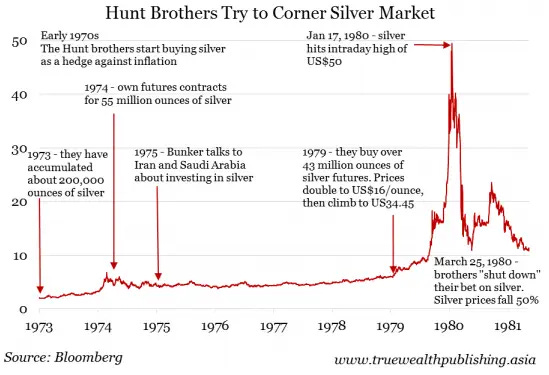The orbs want your eyes
Atleast you'll get tokens in return.
Hey there,
We are at an inflexion point with the internet. Given developments in AI, hardware and networks, we may soon reach a point where more computer-generated content is in your feed than human creators. Your feeds on Twitter and Instagram are already algorithmically picked depending on what you may like the most. But what if all of your content was algorithmically generated too?
Joel & Siddharth have been researching emergent solutions for that. Blockchains could be helpful in the age of endless generated (AI) content that cannot be traced back to a creator. It feels like a problem for the future. I have been looking at what is present here and now. Worldcoin, by Sam Altman (yes, the guy behind Chat-GPT) dropped last week. I have been noticing the nature of its release & what it could mean for users.

I won’t dive into what the device itself does for the newsletter. Fortune has a good brief here for those interested. Vitalik also wrote a qualitative assessment of Worldcoin. He shares how he is curiously optimistic about a decentralised proof of personhood based on biometrics and warns about risks. What picked my interest was the fact that their tokens are now live. Yes, this device which looks like Apple designed it, has a token. And it felt like Sam (from FTX) developed its token economics in a hurry. Quite possibly, while playing games. I’ll explain why shortly.
This issue looks at the numbers around the token and then presents a quantitative take on the project. The project has been scanning the irises of people since May 2021 and has just over 2 million users registered as of July 27, 2023. Every user was promised a certain number of tokens for their iris scan. If anything, the model proves that people would be comfortable using tools that collect highly personal data for incentives. But back to the tokens.
The total number of accounts went from nothing to over 2 million in two years. The number is not that big in a digital world, but when you think about it this way – over 2 million people voluntarily got their irises scanned by visiting locations where Orbs (the device that scans your iris) are located – it’s not a small feat. When was the last time two million people did anything in crypto?
This involves stepping out the door and having your eyes scanned. The closest parallel we could think of was when Pokemon Go made AR cool (and died just as fast).

Until July 26, around 158k users out of the 2 million claimed their airdrop (~25 WLD, or ~$50). This amounts to around 4 million tokens. Remember that some of the 2 million users who reside in the US are not eligible since the SEC protects them. Ironically enough, they may (actually) be protecting users this time. The legal aspects of how the collected data will be stored, used or commercialised are unclear. The distribution strategy of focusing primarily on emerging markets with weaker data laws rhymes with what Facebook was trying with their version of “free internet”.
Here's what's even more wild. Only about 10% of the people eligible to receive the money have claimed the token. During regular airdrops in crypto, we see a 60-70% claim rate within the first three days. Orbs' airdrop is relatively unique because
You can't precisely Sybil the airdrop given they do eye scans
The participants are primarily retail ones that have little knowledge of crypto.
Which matters when you consider how the token's economics is designed. (I know, I have been mentioning it repeatedly). You see, there will be a total of 10 billion tokens in existence after fifteen years. At current prices, if we rank tokens by fully diluted valuation, it would rank #5, right between BNB and Cardano.
From the whitepaper -
After 15 years, governance may decide to implement an inflation rate of up to 1.5% per year if it deems it necessary for the long-term sustainability of the protocol. Governance will also decide how to allocate these newly minted tokens (if any). The inflation cap of 1.5% per year is enforced by the WLD smart contract. Per default, unless changed via governance, the inflation rate is set to 0%.
Some more stat for the numerically inclined
7.5 billion tokens are minted at launch
Of which 500 million are unlocked
And 143 million is the circulating supply (43 million to all the eligible users to claim + 100 million loaned to market makers).
The governance will decide what happens with the remaining unlocked (257 million). We suspect the vast majority will go towards new users who sign up. As all 43 million tokens are not yet claimed, the circulating supply is even lower (~111 million) on July 26, with a float of 1.11%. That float figure is one of the lowest in this industry. And it has long-lasting implications.
Having a low float at the time of launch is a tricky business. It helps you prop up the price in the short run, but the unlocks typically weigh heavy, and the price eventually takes a dive. Leaving holders in losses. Want some examples?
The chart below shows the fully diluted valuation (FDV) of two tokens with 4.6% (Token 1) and 10% (Token 2) floats at the time of launch changed over time. Indeed, markets have gone down drastically. Bitcoin is down 50% from its ATH. Altcoins are, on average, down 80%. These tokens that were launched with low floats are down 98%.
The devil lies in the details. A hundred million tokens are loaned to five market makers (MMs) for three months. At the end of 3 months, they can return tokens or purchase tokens up to any amount they have received. This is where things get interesting.
The formula calculating the purchase cost is $2 + $0.04 * (number of tokens being purchased / 1,000,000). So, if the entity has borrowed 10 million tokens and wishes to buy them, the cost per token will be $2.4. If the token’s market price at the end of three months is $3, the entity will naturally buy tokens at $2.4 and, ceteris paribus, pocket the $0.6 per token.
Some of this may sound like jargon for some of you. So here’s a breakdown. Market-makers are institutions that help new tokens find a fair price when they first list on exchanges. Teams often give a loan that is to be repaid over some time. Market makers use these tokens to provide liquidity (when you buy or sell) on exchanges.
As the loan will be settled in the native token given out (initially), market-makers are incentivised to push prices higher or lower depending on the loan terms. In the case of Worldcoin, the terms are set such that the higher price can be more profitable for the market-makers. (You can read a longer breakdown of how this works from Kaiko’s newsletter here. )
Essentially, World Assets Ltd. (a subsidiary of the Worldcoin Foundation) is selling a call option to MMs. As we know, call options are not free. The buyer has to pay a premium. The implicit premium here is the cost MMs must bear to ensure that the token price remains above $2.4. With MMs controlling more than twice the supply with the rest of the market, Worldcoin has undoubtedly made it easier to ensure they have a profit at the end of three months.
The following table shows how the MM’s profit changes based on the number of tokens borrowed and the market price per WLD at the end of 3 months.
With 111 million circulating and MMs controlling 100 million or ~ 90% of the circulating supply have a clear incentive and the edge to push the price up. For what it’s worth, Sam Altman (not the FTX one) looks like he knows the power of incentives. First, he got two million people to scan their eyes with incentives. Then he onboarded market-makers and incentivised them to keep the price above a certain level until more of the tokens get liquid.
It reminds me of a story my finance professor often used to mention—that of the Hunt brothers. In the 1970s, the Hunt brothers inherited billions of dollars due to their father’s oil and gas industry endeavours. The US had gotten off the gold standard, and the inflation was ticking higher. The Hunt brothers thought it was the time to bet big on Silver. They started buying physical Silver and building a long position in the futures market.
By 1979 they had bought 60% of the Silver in the commodity exchange. The relentless buying pressure caused the price to increase from ~$6 to ~$50. Finally, Uncle Sam panicked and broadcasted – no more silver longs possible (just as they can decide no more shorts possible when the markets fall violently). Silver collapsed, and Hunt Brothers eventually had to file for bankruptcy.
A lot about what the MMs can do depends on two factors
The supply of tokens in the market
Their ownership of the liquid supply in the market
By some estimates, market-makers controlled 90% of the token’s supply when listing. One way to equitably distribute a new asset is to give it to people that can programmatically sell it over time. Perhaps Worldcoin’s attempt is at exactly that. Getting the token in the hands of as many people as possible with the least friction. Without any concern about what the underlying asset itself trades at. (RIP WLD).
All of this makes us wonder, what should Worldcoin even be valued at?
It’s almost impossible to arrive at exact valuations, but it helps to look at benchmarks and to gauge relative valuations. In March 2022, Worldcoin raised $100 million at a valuation of $3 billion and later raised $115 million at an undisclosed valuation.
It now has more than 2 million unique individuals registered on the platform. |To put this into perspective, Token Terminal tells you that
Ethereum has 1.5 million weekly active addresses,
Arbitrum has ~786k, Uniswap has ~318k, and
Starknet has 369k.
Remember that these are not unique users but active wallets. Quite often people have multiple wallets active at a given time. So, two million+ unique individuals registered is a lot when considered on the scale of crypto-native platforms. But perhaps, a fairer comparison is with a centralised platform.
WLD is trading at $2.2, which pegs its fully diluted valuation at ~$22 billion. Coinbase has a market capitalisation of $23.4 billion with 98 million+ registered users.
An even closer comparison can be made with Okta, an Identity and Access management company with over 100 million registered users, trading at ~$11.5 billion. Perhaps, Worldcoin is a whole new paradigm, and any previous valuation metrics are not applicable. Only time can reveal if that’s the case.
At the moment, Worldcoin seems rich, but with a low float and a significant supply with MMs incentivised to drive up the price, who knows how high this thing can fly!
Until next time!
If you liked reading this, check these out next:







